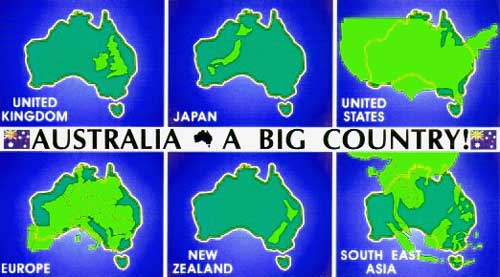Australia’s Population to Reach 23 Million
Whilst we acknowledge the milestone of Australia reaching 23 million people, forgive me for being anti-sensationalist. 23 million people for the size of Australia is far from being one of the earth’s more crowded destinations. Combine the cities of Beijing and Shanghai and you have a population of 28 million plus. You get the picture.
Source : Donantdades
For some, the real celebration for Australia will come when we have a population that is large enough to support major infrastructure projects such as fast rail, a sophisticated public transport system that is cost effective, reliable and highly regular. Services for the public usually improve with larger developed world cities, not regress. Planning for a bigger population takes courage, it is however a constant source of tension as planners attempt to lead the market in certain directions, sometimes in polar opposites to market forces.
Somewhere along the way there has been the issue of boat people woven into the population equation. One has to think that the number of boats is hardly going to have a significant impact on Australia’s population. These people are so desperate to come to Australia they risk theirs and their families lives to do so. Chances are they will probably take the opportunity with both hands and become great representatives of this country. I suspect the real argument about the number of boats is both how to regulate the numbers and how does a boat load of refugees arrive in Australian waters unannounced. Therein lies the real political issue I would suggest.
Population growth will also continue to nurture the Australian economy. With population growth comes the basic need for human services and accommodation. From a development perspective, this is a fundamental foundation of a sustainable industry. Population growth that ages too fast places enormous pressure on younger generations as well as the broader economy. You only have to look at Japan and certain parts of Russia to see this impact. I believe Dick Smith offered $1 million dollars to someone under the age of 30 who could formulate a successful economic strategy around a sustainable population strategy. To date, I don’t think that money has been claimed, (however I am happy to stand corrected if it has.)
There are however those who will be looking at the population of 23 million as not ideal. And their arguments should not be dismissed lightly either.
The most liveable cities in the world are typically less than 2 million people. These are cities that still retain strong economic bases, however this is balanced out by lifestyle benefits and demonstrated in the various living indexes found below.
What you are not seeing is a New York, Los Angeles, Shanghai, Istanbul, Karachi or Mumbai in the top most livable city rankings in the world. From my own experience, I think Shanghai is one of the most interesting cities in Asia that I have been too. I can’t say I would want to live there, but I’d be very happy to jump on a plane and visit it again tomorrow. Perhaps that is the point, we take the good from the big cities and leave what we don’t like or simply accept it as a by-product of size.
Environmental sustainability remains a key argument in every population discussion. However a sustainable environmental outcome also needs to be treated in the same way as any other thing of value. And that is the real point, no one has yet been able to place a real economic value on certain parts of the environment to actually make it worth something unless it is agricultural/mining related land or a development site.
In addition to this, the environmental corridors being set aside in many developable areas are often marginal at best and arguably do not support the best environmental outcomes. Don’t read this as needing more land set aside in developments, read it as setting aside valuable environmental habitat where it is of most use to the relevant species. This could be land located 500km away, however the environmental outcome will be far greater and more positive than a small green corridor that sustains little more than the consciences of well meaning bureaucrats.
When many of you have read this, Australia will have clicked over past 23 million people. The great thing about the two camps is that I get to celebrate with those in favour of this strong, developed/western country growth of 1.7% well into the night, whilst having my hangover with those who can believe it happened but wished it didn’t.
The National Property Research Company
Level 1, 307 Queen Street
BRISBANE QLD 4000
Ph 07 3229 0111
Be In The Know – The National Property Research Co


